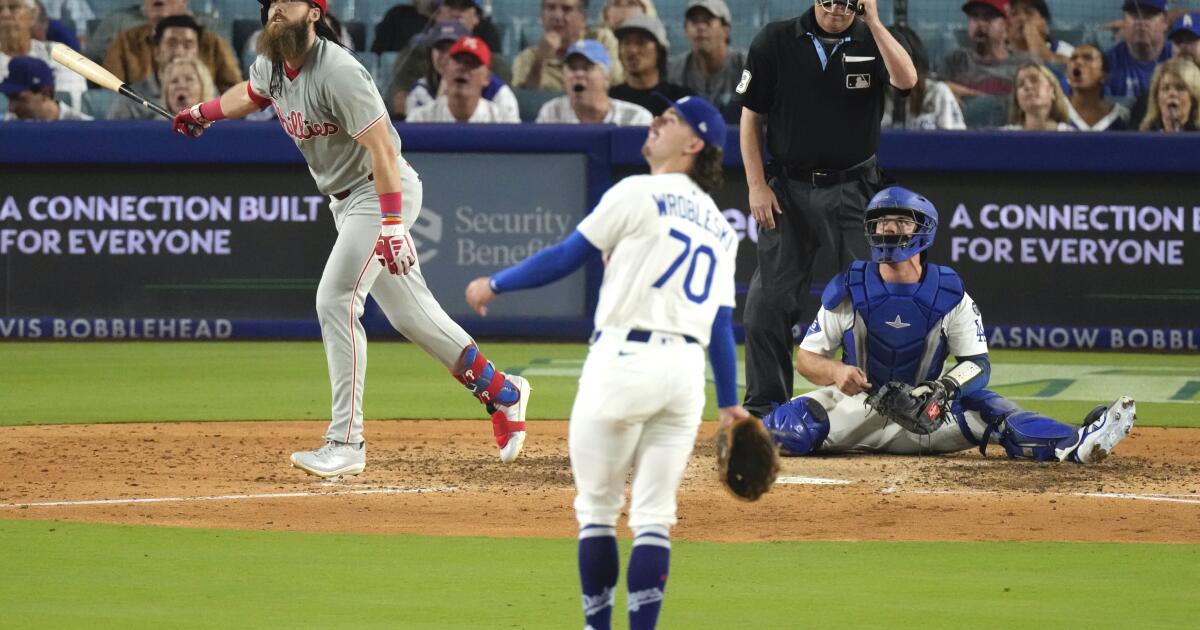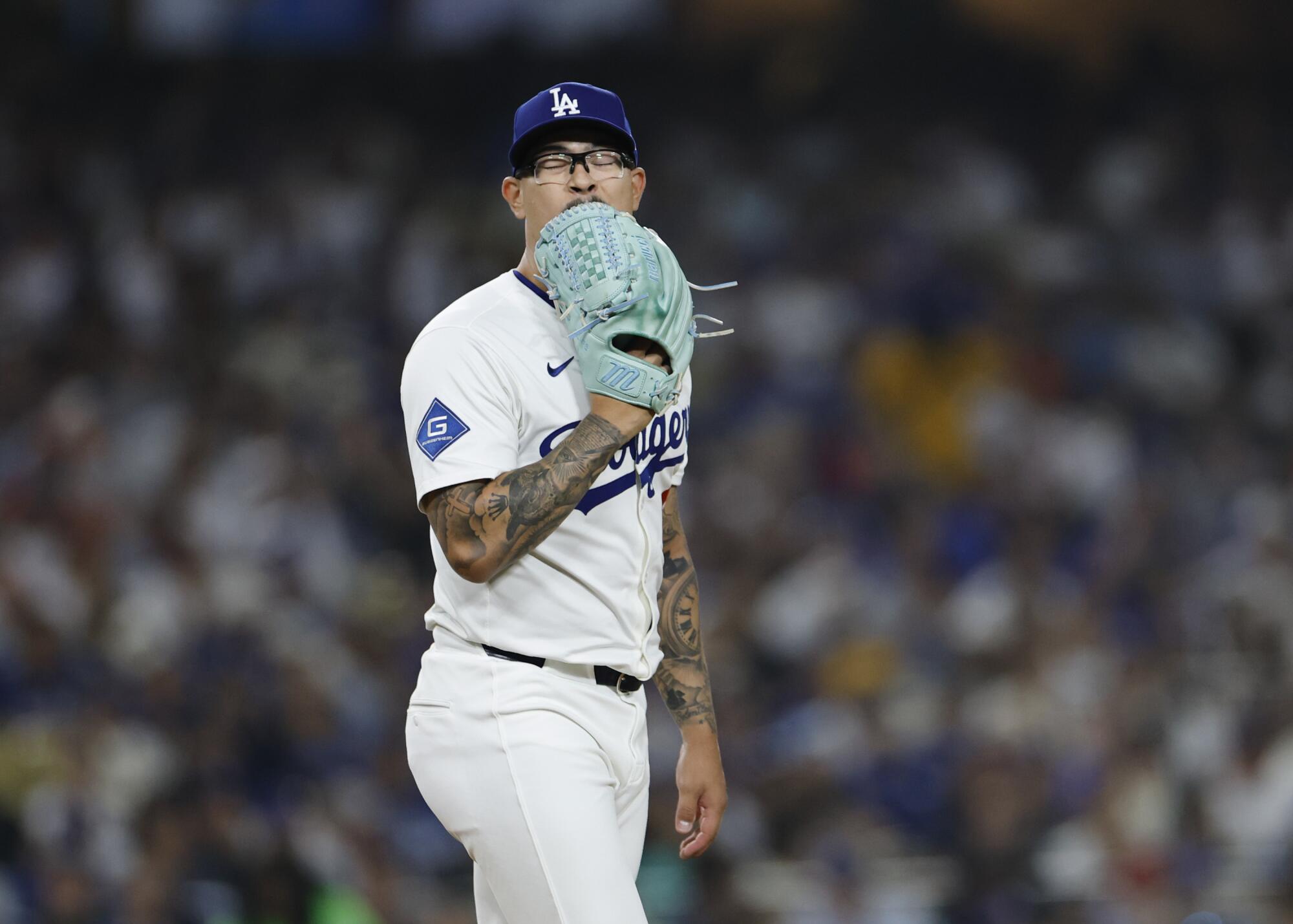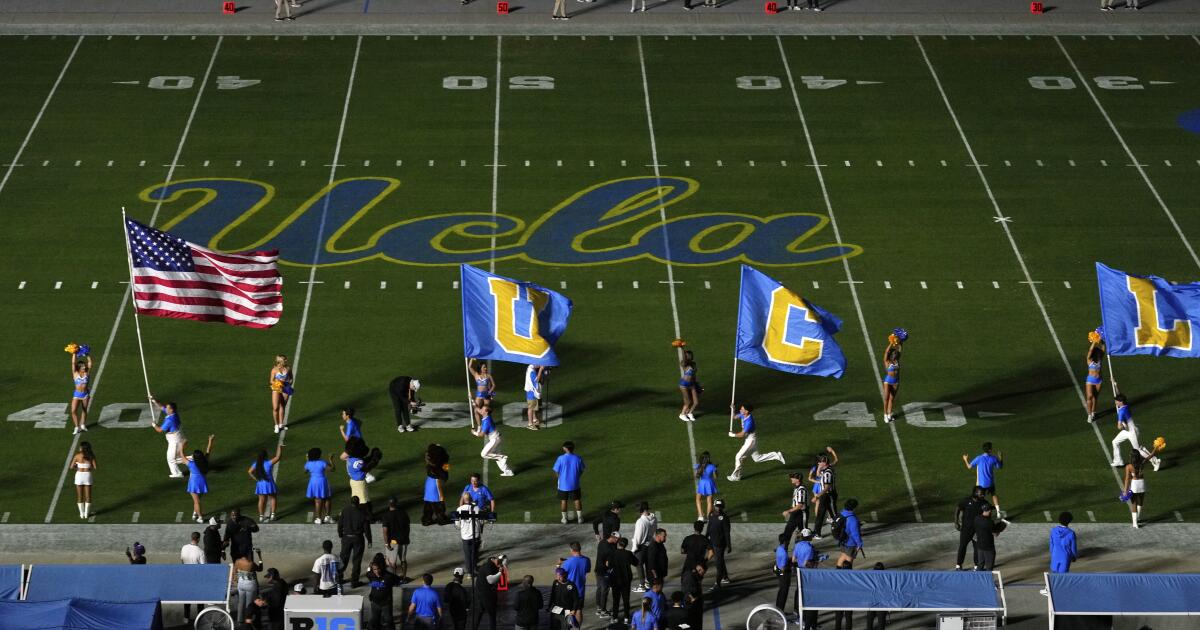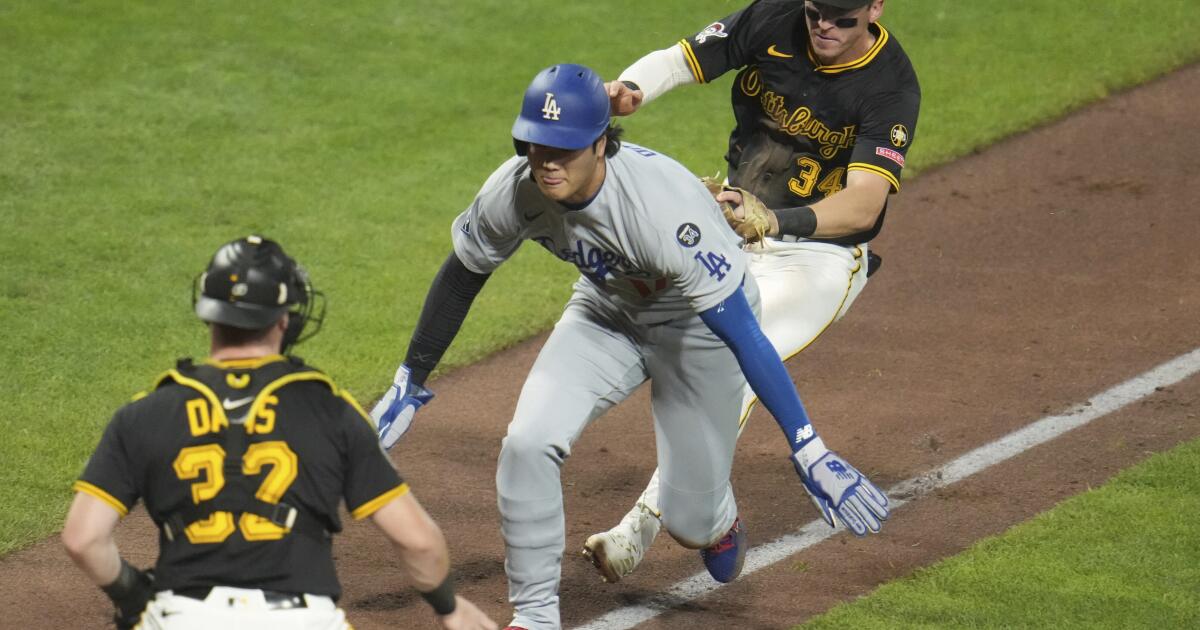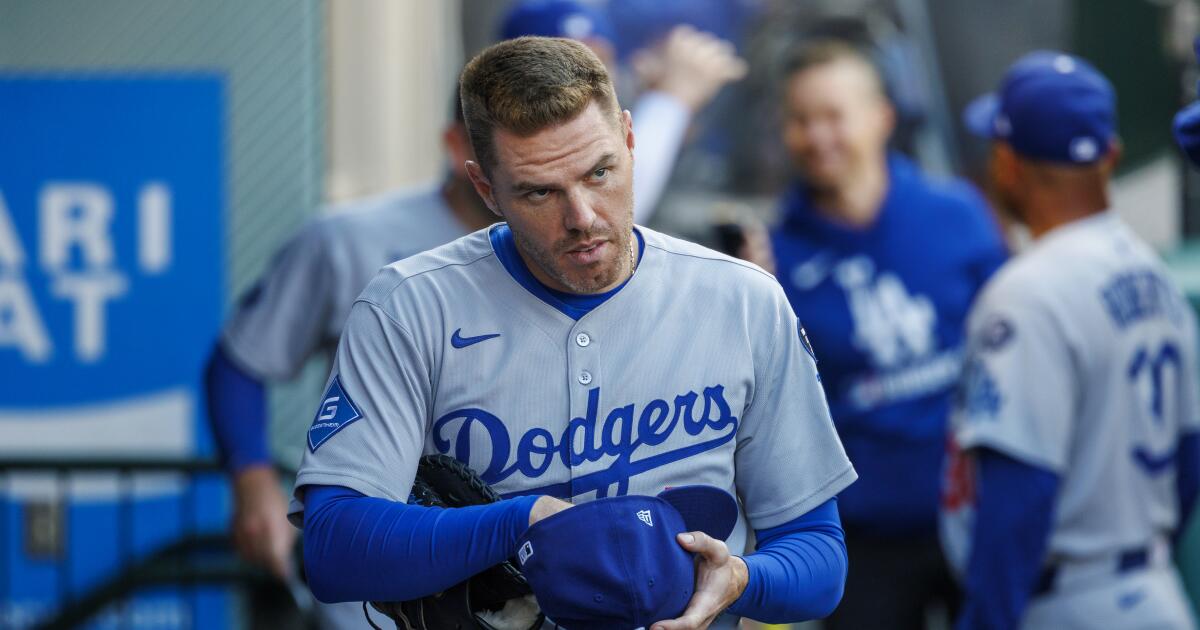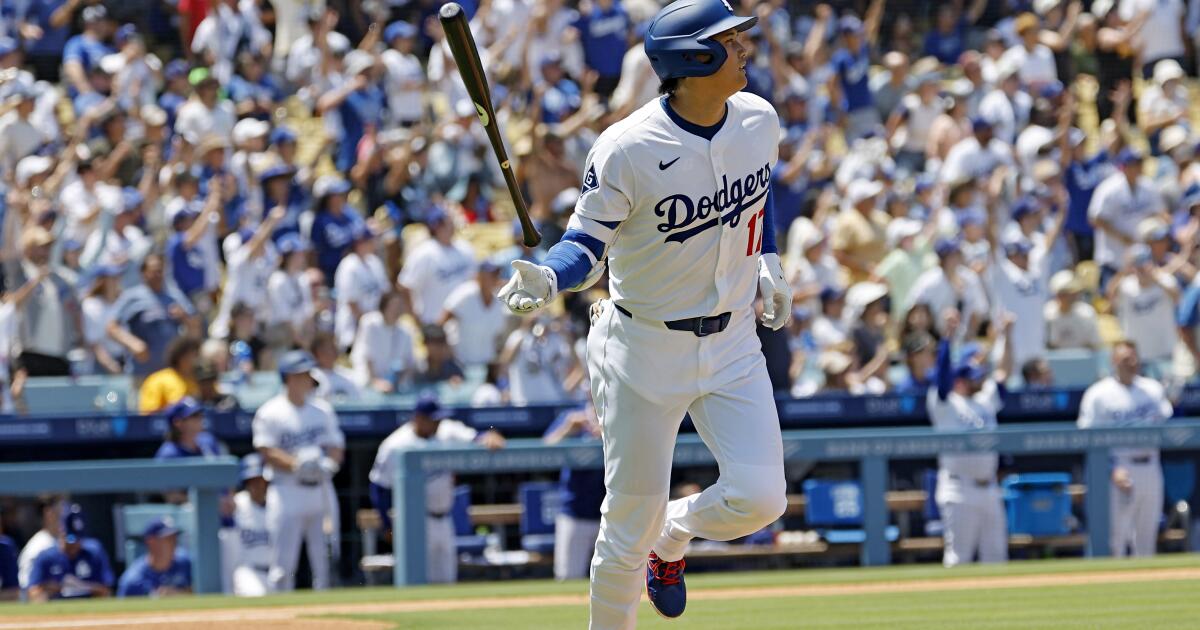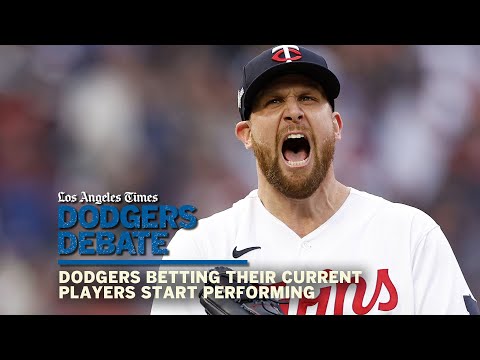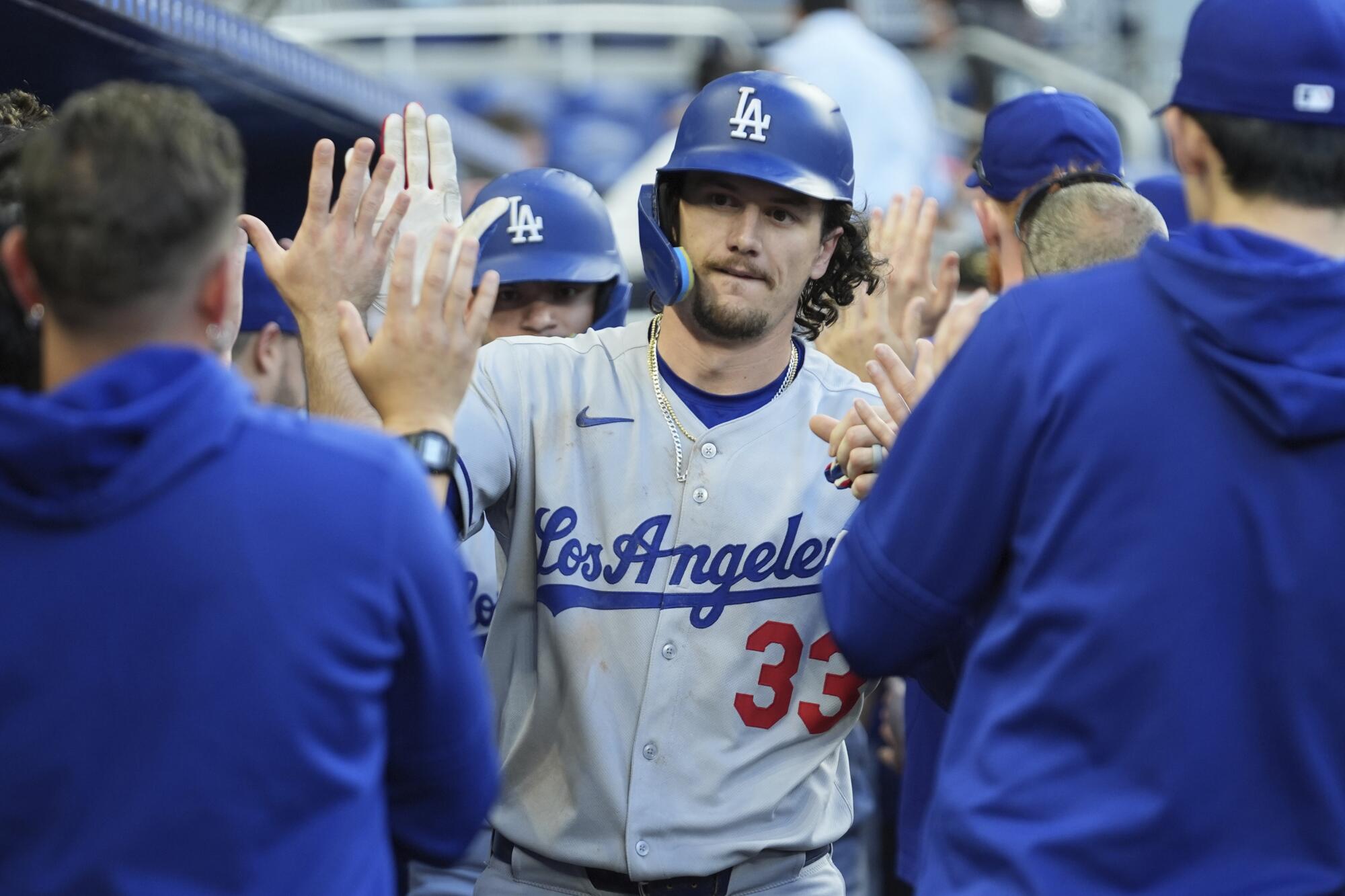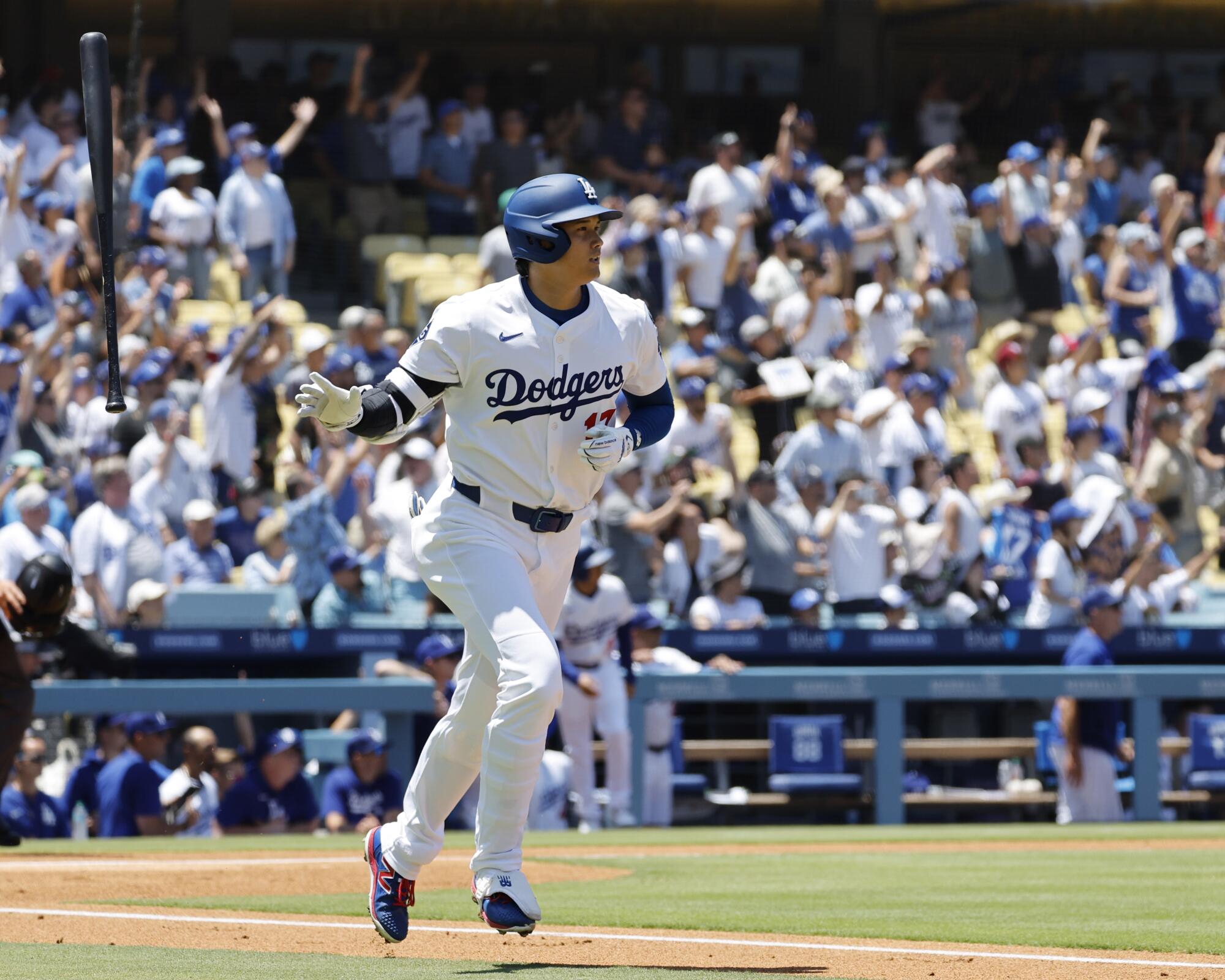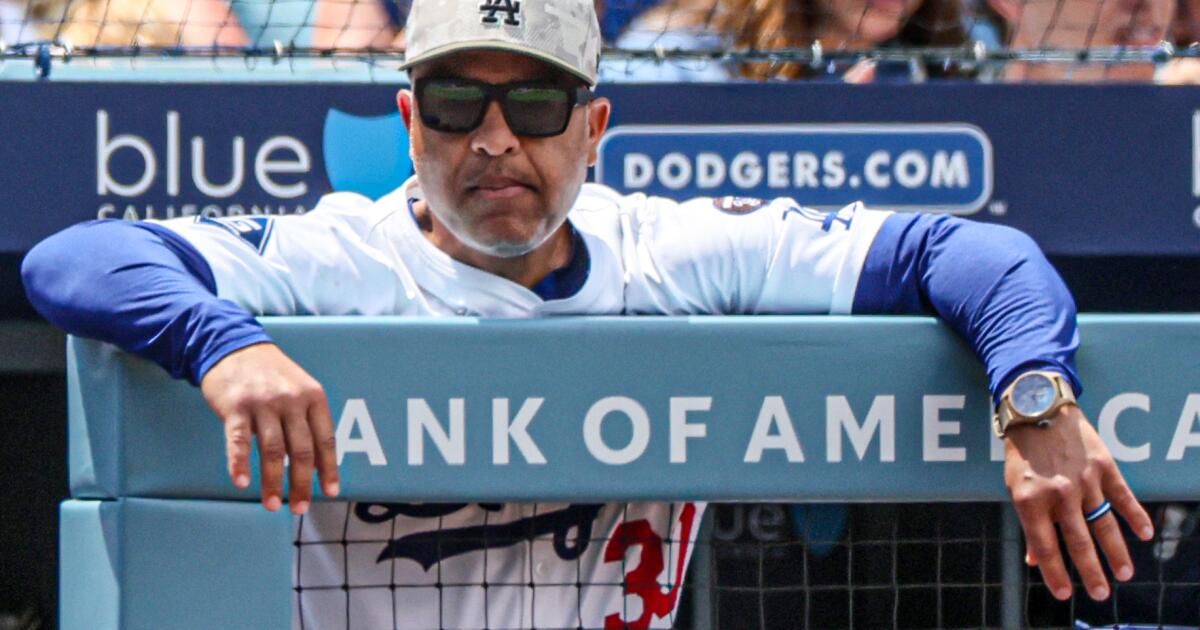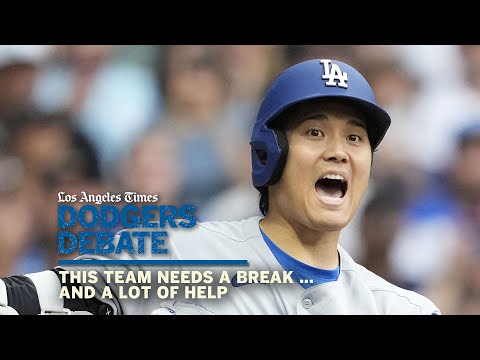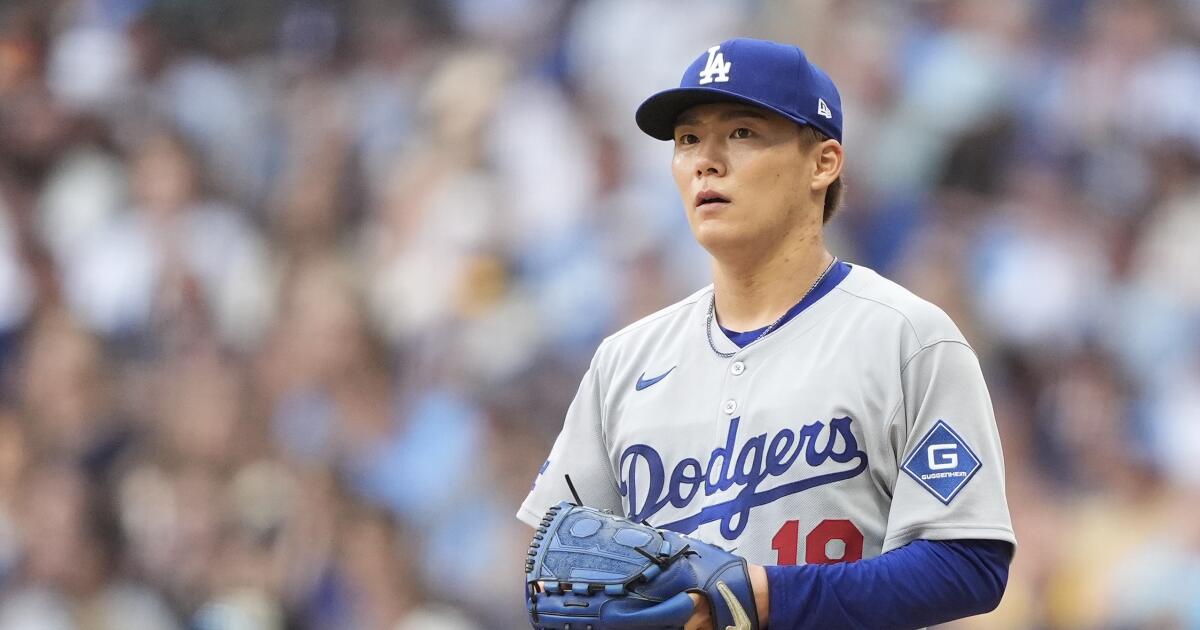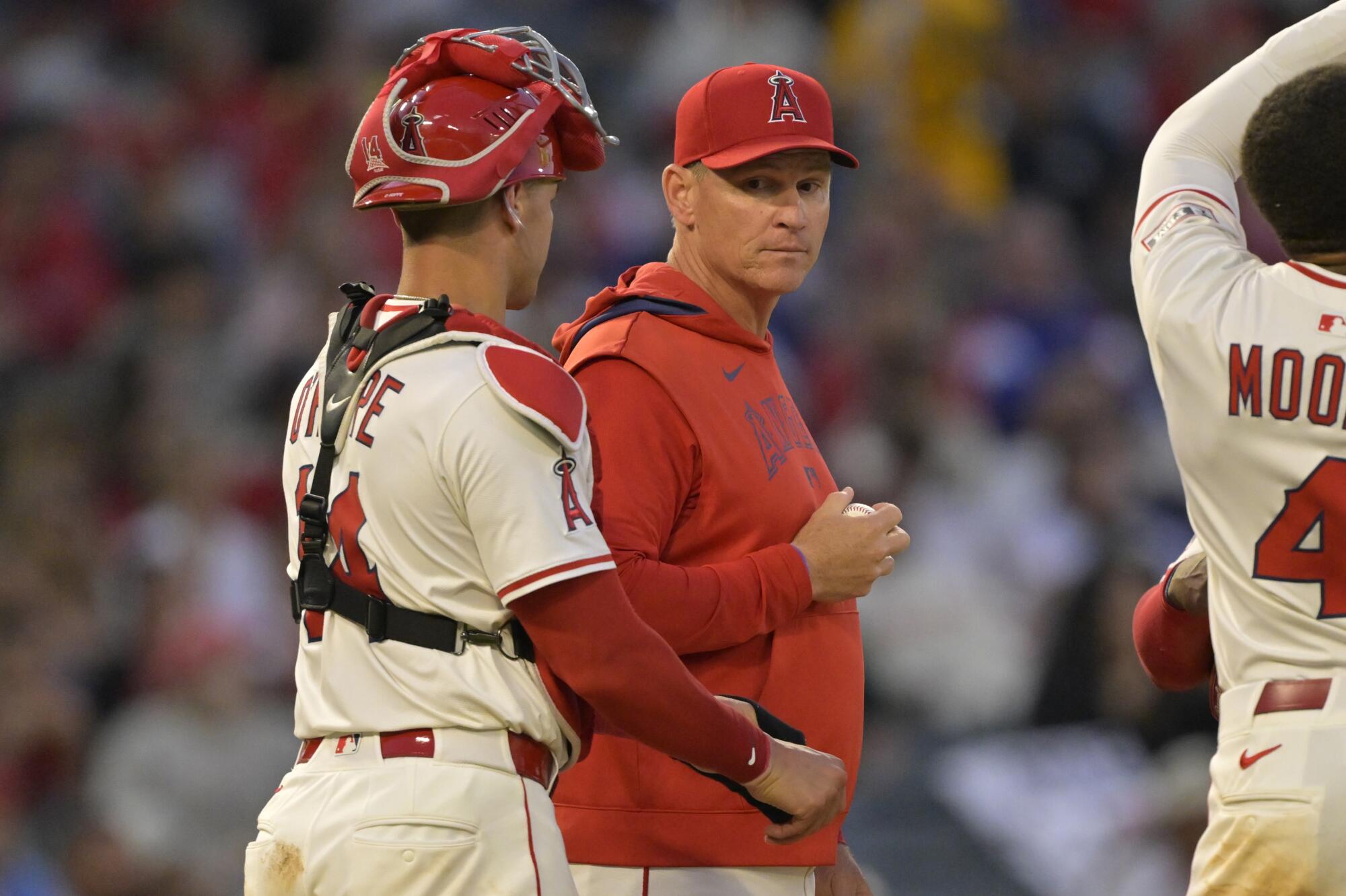Shohei Ohtani in the outfield? The Dodgers have clearly failed him
Shohei Ohtani said he is prepared to make a six-inning start in October. He said he is open to pitching out of the bullpen, even if remaining in the game after a relief appearance might require him to play in the outfield.
His unspoken reasons for wanting to do so are obvious: The Dodgers are terrible.
They aren’t terrible compared to the Colorado Rockies or Chicago White Sox, but they’re terrible for a team with the most expensive roster in baseball.
They’re terrible for a team with ambitions to repeat as World Series champions.
They’re terrible enough that Ohtani is sounding how he did when he played for the Angels.
Ironically, he signed with the Dodgers so that he wouldn’t have to be in this situation again. But here he is, sounding as if he thinks he has to do everything by himself.
The Dodgers have failed him.
Ohtani came up with the idea to defer the majority of his $700-million contract until after he retires, wanting the Dodgers to spend that money to build super teams around him. The Dodgers won a World Series last year, but the good times could already be over.
Instead of building another championship team, president of baseball operations Andrew Friedman constructed an all-time clunker. Instead of creating a 120-win juggernaut on which Ohtani would be able to have his cake and eat it too, the Dodgers have placed him in a predicament in which he could have to decide between prioritizing either the upcoming postseason or his pitching future.
Winning the World Series again with Ohtani on rehabilitation mode will be extremely difficult for these Dodgers, if not downright impossible. Their 9-6 loss to the Philadelphia Phillies on Tuesday night explained why, their bullpen imploding once again to waste another did-that-really-happen performance by Ohtani. At this point, their bullpen might as well be renamed the Nine Horsemen of the Apocalypse.
With Ohtani still in his first season pitching after his second Tommy John surgery, the Dodgers have limited his starts to five innings. That was the plan again on Tuesday, and five no-hit innings by Ohtani wasn’t about to make manager Dave Roberts stray from an organizational directive.
Removing Ohtani was a health decision, not a baseball decision.
However, by sticking to the plan, Roberts was forced to reenact his nightly routine of juggling sticks of dynamite. This time the explosion was immediate, as Justin Wrobleski gave up five runs to turn a 4-0 lead into a 5-4 deficit.
Roberts was loudly booed when he walked to the mound to replace Wrobleski, but how could anyone blame the manager for deploying the hard-throwing left-hander, who was one of the team’s most dependable relievers? It’s not as if the next pitcher shut down the Phillies. Edgardo Henriquez also gave up a homer.
Ohtani’s 50th homer of the season sparked an eighth-inning, two-run rally for the Dodgers that leveled the score, 6-6. The comeback made what happened later all the more deflating. Blake Treinen allowed three runs, and the game was over.
To recap: Ohtani pitched five no-hit innings and blasted a dramatic eighth-inning homer, and the Dodgers still lost.
As much as he provided, it wasn’t enough, which is why he was asked after the game about what more he could do.
Ohtani will pitch as a starter in the postseason but when asked if he could also be deployed as a reliever to help the flailing bullpen, he replied, “I’ve had different conversations with different people, and of course that’s come up.”
That’s when Ohtani presented a novel idea about how the Dodgers could use him.
“As a player, if I’m told to go somewhere, I want to be prepared to do so,” he said. “That’s on the mound and perhaps even in the outfield.”
The outfield?
Under baseball’s current rules, if Ohtani starts a game as a pitcher and is replaced on the mound, he could continue playing as a designated hitter. However, if he starts the game as a DH and pitches out of the bullpen, the Dodgers would lose the DH once his relief appearance is over.
Playing in the outfield would allow the Dodgers to use Ohtani as a reliever and keep his bat in their lineup after.
Told of what Ohtani said, Roberts replied, “He’s a great teammate. He wants to help us win a championship. So I’m all about it.”
Roberts looked delighted.
Of course he did. Any inning pitched by Ohtani is an inning not pitched by one of the Dodgers’ relievers. Any at-bat taken by Ohtani is an at-bat not taken by one of the team’s inconsistent hitters.
Ohtani and the Dodgers will soon have to make a major decision.
The organization can’t remain cautious with Ohtani and make a legitimate effort to retain their crown. They’re not good enough to do both. They will have to choose one or the other.

